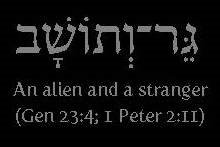Oakes, Peter. Reading Romans In Pompeii: Paulʼs Letter At Ground Level. Minneapolis: Fortress, 2009.
Gombis, Timothy G. Paul: A Guide for the Perplexed. Continuum, 2010.
Hultgren, Arland J. Paulʼs Letter to the Romans: A Commentary. Grand Rapids: Eerdmans, 2011.
Matera, Frank J. Romans. Grand Rapids: Baker Academic, 2010.
"We are standing in a street in Pompeii, looking into the doorway of Region I, Block 10, House 6 . . . flanked by the narrower entrances to Houses 5 and 7 (Figure 1.1)."How can I assign undergraduates a book that opens with a data dump? ...Next please.
"Paul is a herald of the Kingdom of God and of the victory and Cosmic Lordship of Jesus Christ. This is an intensely political vocation, since Paul is proclaiming the emergent reality of a radically new political order--the Kingdom of God--along with an alternative ruler; the crucified, risen, and exalted Jesus. This calling as a herald inevitably involved a pastoral task, since Paul's aim was to see the creation and establishment of Kingdom of God communities throughout the world." (23)Unfortunately, Gombis's evaluation of debated issues sometimes struck me as simplistic and one-sided. No doubt this is partly because I sometimes disagreed with Gombis's conclusions, but--as will be clear below--I have no trouble assigning readings that I disagree with. My concern is that in a guide that aims to introduce debated issues, opposing views should be presented in such a way that critics will agree with the way they are portrayed. The upshot is that I've decided to stick with Westerholm.
Frank Matera's contribution to the Paideia series is short enough to work as a textbook, and it looks like an insightful, up-to-date contribution by a first-rate Pauline scholar. I look forward to reading it. Unfortunately, I fear my students would not, after reading the first paragraph:
"Romans is the first of the Pauline Letters in the NT. Although it enjoys this pride of place because it is the longest of the letters, its placement is well deserved since it is the most detailed presentation of Paul's gospel, and since it has influenced the course of Christian theology more than any other writing of the NT."Thud. Commentaries don't have to be written this way. Here is how Keck begins his:
"Like widely differing siblings raised by the same parents, each letter produced by Paul has its own distinguishing character. For the historically minded critic, each letter's unique traits provide important clues for detecting the circumstances in which Paul wrote it as well as what he hoped to achieve with it."N.T. Wright prefers an extended metaphor:
"Romans is neither a systematic theology nor a summary of Paul's lifework, but it is by common consent his masterpiece. It dwarfs most of his other writings, an Alpine peak towering over hills and villages." (395)Wright's contribution to the New Interpreter Bible Vol 10
Wright and Westerholm make unusual bedfellows, to be sure, since Westerholm is usually cast as an opponent of the "New Perspective" on Paul, and Wright one of its champions--but that (and the fact that I disagree with Wright here and there) is half the point. More important, Wright and Westerholm share the two qualities I'm most looking for in authors that I make my students read. (1) In different ways, both model exemplary scholarship; students will learn the craft by reading. (2) They are also fine, engaging writers. If, as John Trimble
The bottom line: I want textbooks that students want to keep reading, that will help me teach by making my students more rather than less interested in the subject matter. I'm betting Wright and Westerholm will do the trick.

No comments:
Post a Comment